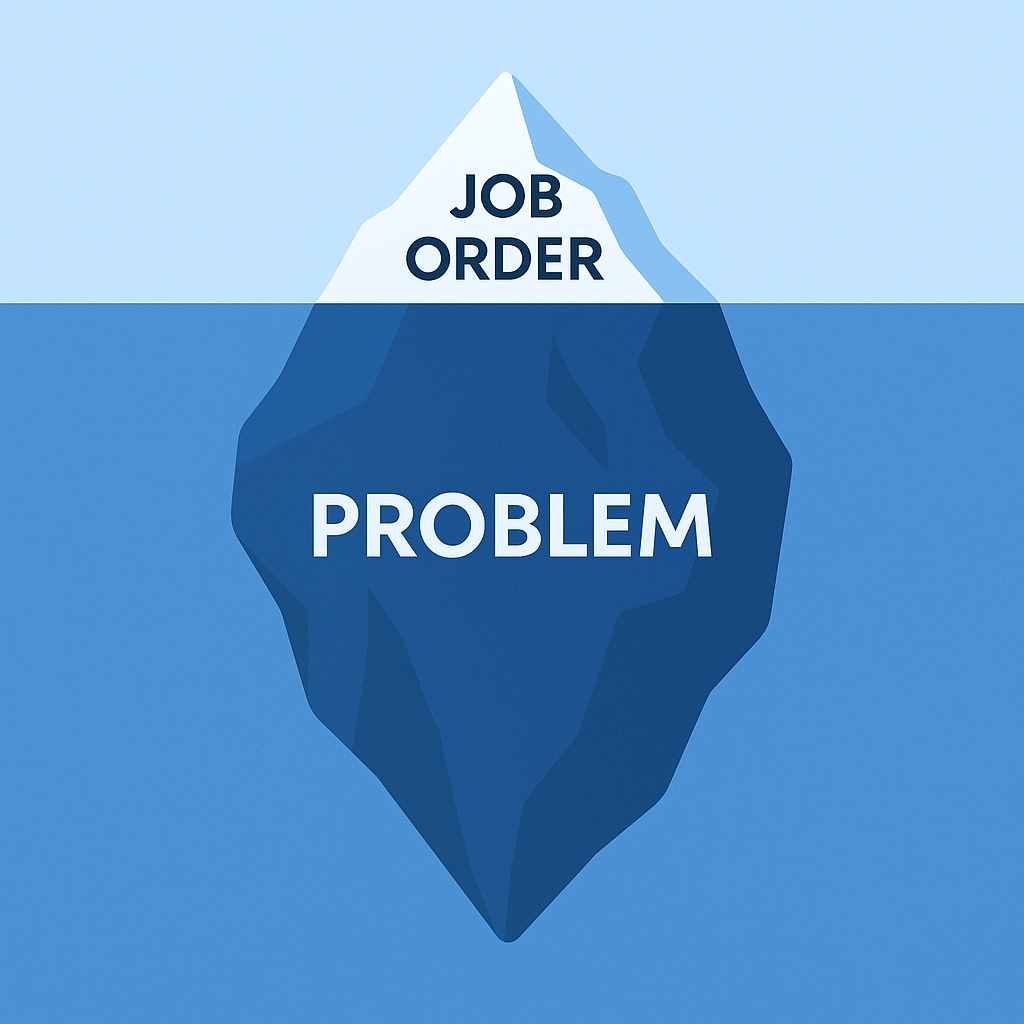Selling With Your Consultant
In my previous post, How to Prevent Unexpected Contract Terminations, I shared how systemizing consultant and client check-ins at key milestones...
5 min read
![]() Dan Fisher
:
Apr 28, 2017 4:50:00 AM
Dan Fisher
:
Apr 28, 2017 4:50:00 AM

What does it mean to be an effective sales leader in today's ultra-competitive staffing industry with a constantly evolving talent workforce? By 2025, experts predict that millennials will make up 75 percent of the global workforce. For staffing sales leaders, this means the next generation of recruiting and sales professionals is on the rise which requires a new approach to sales leadership. The "old school" way of managing sales professionals no longer works. To effectively lead the next generation of sales professionals staffing leaders will need to evolve. What does that mean and how does that translate into the day to day operations?
requires a new approach to sales leadership. The "old school" way of managing sales professionals no longer works. To effectively lead the next generation of sales professionals staffing leaders will need to evolve. What does that mean and how does that translate into the day to day operations?
In this blog post, Are you an "Old School" or "New School" Sales Leader? I share with you four examples of how "new school" sales leaders lead their sales teams.
1) Take a Bottom up Approach to Setting SMART Goals
Sales people must have goals -- but they must be realistic in order to motivate reps and gain genuine buy-in. "New school" sales leaders accomplish this by working hand n hand with their team to establish goals that are both challenging and attainable. Goal setting should be a collaborative effort, not created in a vacuum. There is nothing worse than having a rep or an entire sales team that doesn't believe in their sales goals and/or has no idea how their manager came up with their goals.
Sales goals should be aligned with your sales strategy and must be measured over time. A recent report showed that 95% of millennials said that they are motivated to work harder when they understand the importance of a particular task within the context of the company’s big-picture goals. Doing so will keep your sales team on track and motivated. When your sales team experiences the results from all of their hard work and are recognized for their efforts, they’ll push themselves to even higher levels of performance. In fact, a survey conducted by Globoforce this year found 70% of employees say they have a greater emotional connection to their job when they’re recognized for their work.
In case you for forgot what SMART goals are:
2) Provide Holistic Feedback, Let Your Rep Self-Diagnose
Traditional or "old school" sales leaders always focus on providing evaluative feedback, typically focusing on past results the rep has produced and what they need to do to improve their performance. By comparison, "new school" sales leaders focus on looking into the future and identifying the behavioral issues that impact performance. Rather than simply pointing to the numbers (results) they focus on identifying and understanding the underlying behaviors that are causing holding the sales rep back from maximizing their potential. "Old school" sales leaders like to quickly jump to the end of discussion by simply telling the rep "you need to make more calls to get more meetings." They focus on telling reps they need to work harder. "New school" sales leaders possess coaching skills which enables them to empower their reps to self identify and self diagnose their specific skill deficiencies and behaviors that are holding them them back. This is why "new school" sales leaders are much more effective than "old school" sales leaders with identifying core performance issues and gaining genuine buy-in from their reps for developing strategies to improve performance. When you have buy-in from your reps, sales coaching becomes far more easier and more impactful.
3) Create a Team-Oriented Sales Culture
Old school sales teams focus on cut-throat competition between peers and teams. Does this look familiar?
"Old school" leaders like to talk up one rep and their recent wins and use it as a motivational tool to motivate another rep. This is old school sales management at it's finest. Don't get me wrong, sales leader boards throughout the office, daily, weekly, monthly and quarterly contests are good and important to driving a high performing sales culture. But if you're not careful, these methods can wreck havoc on a team including their mojo over the long run. It’s worth incorporating a team-first approach that encourages and rewards collaboration as a core value.
"New school" sales leaders have adopted a leadership style that fosters team collaboration where employees feel comfortable sharing ideas, best practices and perfecting strategies, and giving advice to each other. Employees shouldn't hoard their "secret sauce" and successes to themselves, but rather share them with their teammates to drive improved sales performance throughout the organization.
Creating a sales culture and a sales team that encourages team collaboration will out  perform any "old school" sales team focused exclusively on personal results. Not only that, fostering a team first sales culture will help you retain and develop talent.
perform any "old school" sales team focused exclusively on personal results. Not only that, fostering a team first sales culture will help you retain and develop talent.
4) Leverage Leading, Not Lagging Indicators
Leading indicators (KPI's) are indicators that a strategic step or set of activities that will trigger future results has been successfully completed. In layman’s terms, you want to coach and support your team by asking: “What proactive steps can you take in the short term that will drive success in the long term?” If, for example, you want to increase your average deal size or gross profit margin, a leading indicator might be associated with value building such as demonstrating an ROI analysis of your offering and gaining agreement from a VP. "Old school" leaders focus on managing to the results. These are the managers who simply look at meetings, job orders and placements. As I'm sure you know, there are a number of sales activities that the sales rep must execute in order to compel a client to take the next step in their buyer journey such as meeting with the rep or giving him or her a job order. But "old school" sales leaders are unaware of the importance of these leading indicators so instead they focus exclusively on the lagging indicators or the results. When sales leaders fail to track, measure and coach to those leading indicators, how can they expect improve performance and sales effectiveness? They can't because they're focused on the wrong KPI's.
Take a basketball player for example. Why do you think professional basketball players (and all professional athletes) spend so much time in the film room studying their opponent before every game? Professional athletes study their opponent to understand their tendencies, strengths and weaknesses and their defensive scheme. Of course, the professional basketball player could skip this step and simply focus on their scoring average and improving their shooting percentage but focusing on these lagging indicators is not going to help them when they step onto the court. See the difference?
Leading indicators are inherently proactive. Sales leaders and their teams need to focus on leading indicators to drive performance in a positive direction. This is what ensures sales reps are working on the right tasks and activities to improve their effectiveness and their results.
The world of sales is changing, fast. We have already witnessed how buyer behavior has changed, and now a new generation of sales professionals is upon us. Sales leaders need to adapt. Take a look in the mirror and ask yourself, "is my team a bunch of gunslingers winging it like it's the wild, wild, west or do we operate like an orthopedic surgeon?
If you (or someone you know) are looking to be less of a manager and become more of a coach in which you empower your people to take responsibility for their actions and results, download our ebook.

In my previous post, How to Prevent Unexpected Contract Terminations, I shared how systemizing consultant and client check-ins at key milestones...

About a year ago, I was serving as the fractional revenue leader, managing sales and recruiting for a client.

If you’ve worked in staffing long enough, you’ve been trained to chase job orders.